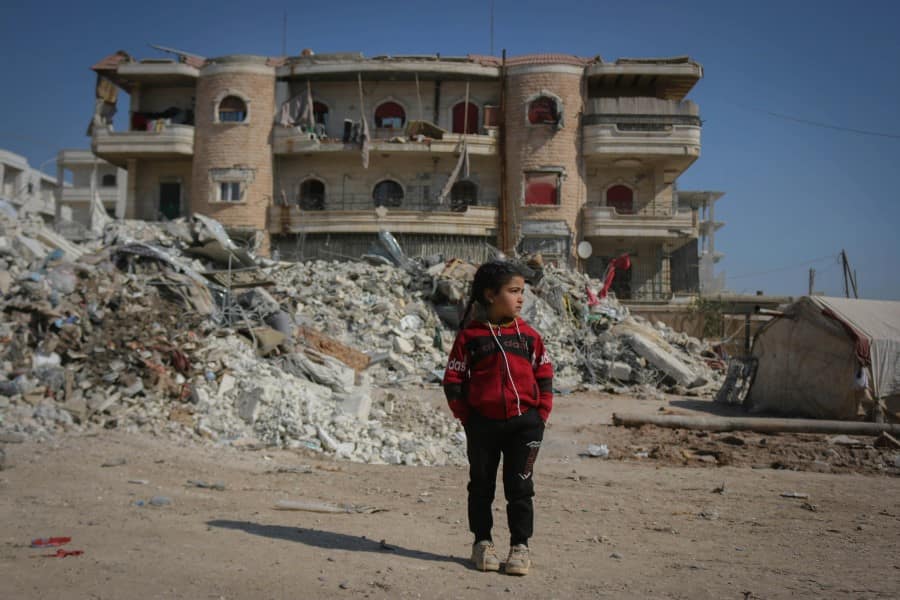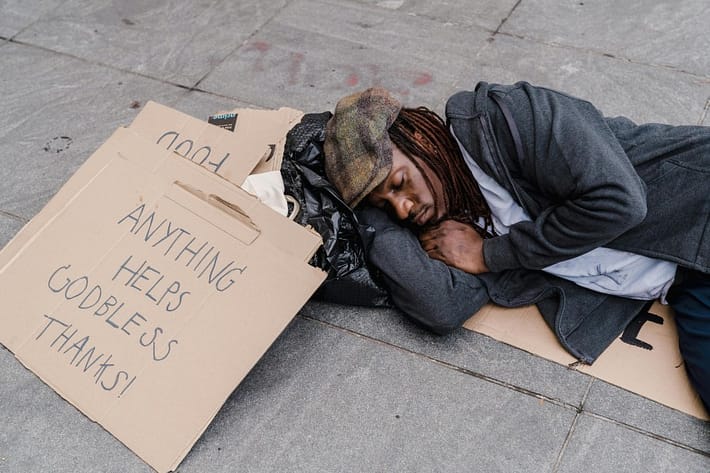20 Cases of Poverty From Natural Disasters

Natural disasters have profound and far-reaching impacts, often exacerbating existing vulnerabilities and plunging communities into poverty. This article explores 20 examples of poverty from natural disasters, leading to significant socio-economic repercussions and highlighting the intricate relationship between environmental calamities and poverty.
1. The Great Chinese Famine (1959-1961)
The Great Chinese Famine, triggered by a combination of natural disasters such as droughts and floods, alongside flawed government policies, resulted in the death of an estimated 15 to 45 million people. The famine severely affected agricultural production, leading to widespread poverty and malnutrition.
2. The Indian Ocean Tsunami (2004)
The Indian Ocean tsunami of 2004, caused by a massive undersea earthquake, devastated coastal communities in 14 countries, killing over 230,000 people. The disaster destroyed homes, livelihoods, and infrastructure, pushing millions into poverty, particularly in Indonesia, Sri Lanka, India, and Thailand.
3. Hurricane Katrina (2005)
Hurricane Katrina struck the Gulf Coast of the United States, causing widespread devastation in New Orleans and surrounding areas. The storm displaced hundreds of thousands of residents, destroyed homes and businesses, and led to long-term economic hardship for many, especially the poorest communities.
4. The Haiti Earthquake (2010)
The 2010 earthquake in Haiti, measuring 7.0 on the Richter scale, caused catastrophic damage in the capital, Port-au-Prince. The disaster killed an estimated 230,000 people, left over 1.5 million homeless, and exacerbated the already severe poverty in the country, leading to long-term economic challenges.
5. The Sahel Drought (1968-1985)
The Sahel drought, which spanned nearly two decades, affected several countries in West Africa, including Mali, Niger, and Chad. The prolonged drought led to severe food shortages, livestock deaths, and massive displacement, plunging millions into poverty and sparking widespread humanitarian crises.
6. The Bangladesh Cyclone (1970)
The 1970 Bhola cyclone in Bangladesh, one of the deadliest tropical cyclones ever recorded, killed an estimated 300,000 to 500,000 people. The cyclone devastated coastal regions, destroying homes, crops, and livelihoods, and leaving millions in extreme poverty.
7. The Ethiopian Famine (1983-1985)
The Ethiopian famine, exacerbated by drought and political instability, resulted in the deaths of over 400,000 people. The famine devastated agricultural production, leading to widespread malnutrition and poverty, particularly in rural areas.
8. The Nepal Earthquake (2015)
The 7.8 magnitude earthquake that struck Nepal in 2015 caused widespread destruction, killing nearly 9,000 people and injuring thousands more. The disaster destroyed homes, cultural heritage sites, and infrastructure, pushing many families into poverty due to loss of livelihoods and resources.
9. The California Wildfires (2018)
The 2018 wildfires in California, including the Camp Fire, which destroyed the town of Paradise, caused extensive property damage and economic loss. The fires displaced thousands of residents, leading to long-term economic challenges and poverty for many affected families.
10. The Mozambique Cyclone Idai (2019)
Cyclone Idai struck Mozambique in 2019, causing massive flooding and destruction. The disaster affected over 3 million people, destroying homes, crops, and infrastructure, and exacerbating poverty and food insecurity in the region.
11. The Pakistan Floods (2010)
The 2010 floods in Pakistan, caused by unprecedented monsoon rains, affected over 20 million people. The floods destroyed homes, farmland, and infrastructure, leading to severe economic hardship and poverty for millions of displaced families.
12. The Mount Pinatubo Eruption (1991)
The eruption of Mount Pinatubo in the Philippines in 1991 was one of the largest volcanic eruptions of the 20th century. The eruption displaced hundreds of thousands of people, destroyed agricultural land, and caused long-term economic hardship for many affected communities.
13. The Tohoku Earthquake and Tsunami (2011)
The Tohoku earthquake and tsunami in Japan in 2011 caused massive destruction, killing nearly 16,000 people and causing widespread economic damage. The disaster displaced hundreds of thousands of residents, destroyed infrastructure, and led to long-term economic challenges for many affected families.
14. The Central European Floods (2013)
The 2013 floods in Central Europe affected several countries, including Germany, Austria, and the Czech Republic. The floods caused extensive property damage, disrupted transportation and industry, and led to economic losses, pushing many families into poverty.
15. The Iranian Earthquake (2003)
The 2003 earthquake in Bam, Iran, measuring 6.6 on the Richter scale, killed over 26,000 people and destroyed much of the city. The disaster displaced thousands of residents, leading to long-term economic hardship and poverty for many affected families.
16. The Horn of Africa Drought (2011-2012)
The 2011-2012 drought in the Horn of Africa affected several countries, including Somalia, Kenya, and Ethiopia. The drought caused severe food shortages, livestock deaths, and massive displacement, exacerbating poverty and sparking a humanitarian crisis.
17. The Australian Bushfires (2019-2020)
The 2019-2020 bushfire season in Australia, known as “Black Summer,” caused extensive property damage and economic loss. The fires displaced thousands of residents, destroyed homes and businesses, and led to long-term economic challenges for many affected families.
18. The El Niño Phenomenon (1997-1998)
The 1997-1998 El Niño phenomenon caused extreme weather conditions worldwide, including droughts, floods, and cyclones. The disaster led to widespread economic losses, food insecurity, and poverty, particularly in vulnerable regions such as Southeast Asia, Africa, and Latin America.
19. The Indian Heat Wave (2015)
The 2015 heat wave in India killed over 2,500 people and caused widespread economic disruption. The extreme heat affected agricultural production, leading to food shortages and economic hardship for many farmers and rural communities.
20. The Caribbean Hurricanes (2017)
The 2017 hurricane season in the Caribbean, including hurricanes Irma and Maria, caused extensive destruction and economic loss. The hurricanes displaced thousands of residents, destroyed homes and infrastructure, and led to long-term economic challenges and poverty for many affected communities.
Poverty From Natural Disasters Conclusion
Natural disasters have devastating impacts on communities, exacerbating existing vulnerabilities and plunging many into poverty. The 20 examples highlighted in this article illustrate the profound and far-reaching socio-economic consequences of natural disasters, underscoring the need for comprehensive disaster preparedness, response, and recovery strategies to mitigate their effects and support affected populations. By addressing the root causes of vulnerability and building resilient communities, societies can better withstand the impacts and reduce the risk of poverty from natural disasters.
Help Fight Poverty From Natural Disasters
At End Poverty Now, our ability to make a difference hinges on the kindness of donors like you. Your support provides crucial resources, opportunities, and hope to those in need. Whether you choose to make a one-time donation or become a recurring donor, every contribution helps us on our mission to end extreme poverty.
End Poverty Now welcomes cash donations, but we also specialize in accepting donations of hard-to-sell assets such as real estate, aircraft, vehicles, and boats. These contributions help fund projects dedicated to alleviating poverty both domestically and internationally. Please see how you can help end poverty and thank you for considering us in your philanthropic efforts.
End Poverty Now is a 501c3 nonprofit charity accepting cash donations and specializing in donations of hard-to-sell assets such as real estate, aircraft, vehicles, and boats to fund projects aimed at fighting poverty at home and abroad.


